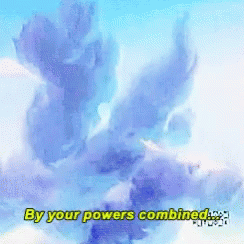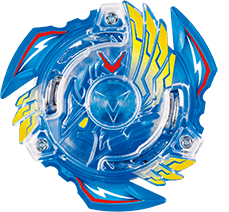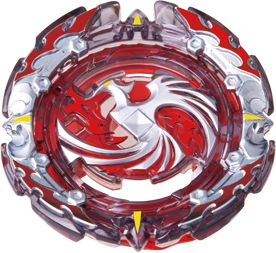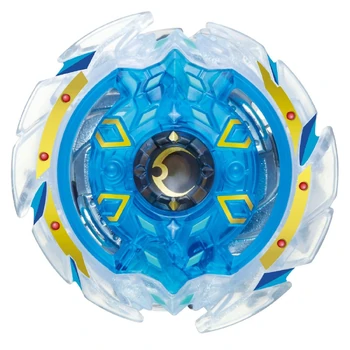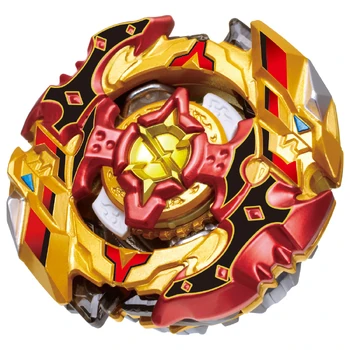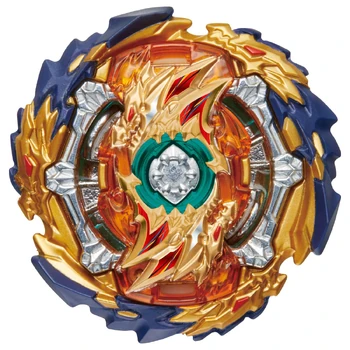Even with some inaccuracies in the show, I appreciate the time put in to display two fundamental aspects...
 |
| Power and Style |
Launch
techniques are another fundamental aspect of the game, though it's normally
overlooked by casual players or spectators. To further add to the game's
versatility, you need to decide and use a launch that works best either for
your bey and/or for dealing with your opponent. Being the other factor you can
directly control during a battle, one should put in some time to understand how
each launch technique works, and how to perform them yourselves when the time
comes.
So with that, let's start breaking them down, shall we? Before we start, please note that the techniques I'll describe here are generally for standard stadiums, and they may not be able to work in stadiums with gimmick designs. Additionally, when I mention holding a launcher, holding a grip attached to the launcher is an interchangeable term as well.
So with that, let's start breaking them down, shall we? Before we start, please note that the techniques I'll describe here are generally for standard stadiums, and they may not be able to work in stadiums with gimmick designs. Additionally, when I mention holding a launcher, holding a grip attached to the launcher is an interchangeable term as well.
-
Standard Launch
This is
the go-to launch when starting off and learning how to play the game.
Generally, the hand that holds the launcher is held over the stadium at an
angle parallel to the center of the stadium floor and doesn't move from its
position as the cord is pulled. This causes the bey to drop to the center of
the stadium before going into the general movement pattern caused by the tip.
You can change up the launch by pulling harder or more softly to
increase/decrease spin power respectively.
Increasing power will give the bey more stamina and movement while decreasing power can soften the impact of attacks and restrict movement, which also reduces the chance that your bey bursts. While it's a solid launch, your bey is somewhat open to attacks as a result of being in the center, so you can mix it up by aiming for different spots in the stadium. In general, this launch is recommended for beys that have limited movement, such as defense and stamina types, to maximize endurance.
Increasing power will give the bey more stamina and movement while decreasing power can soften the impact of attacks and restrict movement, which also reduces the chance that your bey bursts. While it's a solid launch, your bey is somewhat open to attacks as a result of being in the center, so you can mix it up by aiming for different spots in the stadium. In general, this launch is recommended for beys that have limited movement, such as defense and stamina types, to maximize endurance.
- Banking
Launch
The
banking launch works like the standard launch with a catch. You still have a
stable grip on your launcher as you pull the cord, but you now "bank"
the launch by holding it at an angle where the bey is parallel to the slope of
the stadium instead of its center.
Since the performance tip now lines up with the stadium slope your bey will have a wider range of movement around the stadium before it becomes upright or loses enough spin to return to its standard movement. While this launch can be used for beys with stable performance tips to dodge or initiate some attacks on their own, this launch greatly benefits beys with more movement such as attack types, as the movement allows for attacks to better target the center instead of just riding around the outside of the stadium.
You can also use it on other types in an attempt to avoid attack patterns. The wider movements do take some stamina away as a result, but altering the initial movement pattern of your bey can aid in using the remaining stamina to maximize the other aspects of your bey. In addition to practicing banking, I'd suggest trying out other angles to see what else may work for your beys.
Since the performance tip now lines up with the stadium slope your bey will have a wider range of movement around the stadium before it becomes upright or loses enough spin to return to its standard movement. While this launch can be used for beys with stable performance tips to dodge or initiate some attacks on their own, this launch greatly benefits beys with more movement such as attack types, as the movement allows for attacks to better target the center instead of just riding around the outside of the stadium.
You can also use it on other types in an attempt to avoid attack patterns. The wider movements do take some stamina away as a result, but altering the initial movement pattern of your bey can aid in using the remaining stamina to maximize the other aspects of your bey. In addition to practicing banking, I'd suggest trying out other angles to see what else may work for your beys.
-
Catapult Launch
This
launch starts in the same position as the standard launch, but as the name
suggests, the bey is "catapulted" into the stadium by pushing the
launcher forward at the same time as you pull the cord back when
launching. This generates more power than the standard launch to further
increase stamina, and the force can also allow for a strong opening attack.
However, it's difficult to use initially as the power comes at the cost of some
control and accuracy. If launching straight out be careful so that you don't
hit your opponent or another object.
This launch benefits any bey as the stamina is increased, but the greater amount of rotations can leave it vulnerable to recoil, and beys with more mobile tips may have a harder time remaining in the stadium. Since it may also divert from the normal movement pattern due to inertia from the launch, consider using it with tips that have smaller ranges of movement for more control. Practice keeping the launch within the stadium without a bey attached at first, and also have an idea in mind of where you want your bey to land in the stadium to adjust before you launch.
This launch benefits any bey as the stamina is increased, but the greater amount of rotations can leave it vulnerable to recoil, and beys with more mobile tips may have a harder time remaining in the stadium. Since it may also divert from the normal movement pattern due to inertia from the launch, consider using it with tips that have smaller ranges of movement for more control. Practice keeping the launch within the stadium without a bey attached at first, and also have an idea in mind of where you want your bey to land in the stadium to adjust before you launch.
-Sliding/Rush
Launch
This launch combines utilizes both aspects of banking and catapulting
into one launch technique, which is popular among competitive players and has
gained more notice due to it being featured in the Beyblade Burst anime
series. To start, have your launcher held in a banking position parallel to and
targeted at the stadium slope. Then, launch from that position via catapulting
your bey.
This results in the movement shifting at the start to continuously move to and from the center in a flower pattern (as the small circular movements resemble the petals around a flower's pistil) for mobile beys. Because of that, this technique is recommended for beys with more movement, especially attack types as you get the extra power from catapulting, with less stamina wasted since banking the launch lets you get more attacks on the center initially. To practice the launch I'd suggest starting with catapulting practice to get your launch under control, and then adding banking to work on developing the desired effect.
This results in the movement shifting at the start to continuously move to and from the center in a flower pattern (as the small circular movements resemble the petals around a flower's pistil) for mobile beys. Because of that, this technique is recommended for beys with more movement, especially attack types as you get the extra power from catapulting, with less stamina wasted since banking the launch lets you get more attacks on the center initially. To practice the launch I'd suggest starting with catapulting practice to get your launch under control, and then adding banking to work on developing the desired effect.
-Bank Down Launch
This is a variant of the sliding/rush launch where your launcher is
angled further down from the normal banking angle, where it's a bit closer to being launched vertically against the stadium. Like the
previous launch, this is done while catapulting and has nearly the same results
as a sliding/rush launch. By angling the launcher further down it's easier to
perform than the previous technique since the angle is tilted further
decreasing the chance of correcting the launch to be parallel to the center of the
stadium.
However the impact of the launch from catapulting takes the endurance benefit that's normally granted as a result, making the technique weaker than the sliding/rush launch. It also leaves some tips prone to breaking from the impact as well, so I wouldn't recommend using it aside from as practice to ease into learning the sliding/rush launch.
However the impact of the launch from catapulting takes the endurance benefit that's normally granted as a result, making the technique weaker than the sliding/rush launch. It also leaves some tips prone to breaking from the impact as well, so I wouldn't recommend using it aside from as practice to ease into learning the sliding/rush launch.
- Flash Launch
This launch is like the bank down
launch without catapulting. By setting your launcher at an angle past the
regular one for banking, the launch sends your bey to the center and then has
it perform its regular movement pattern. This is also recommended mainly for
attack types, specifically in attack vs attack battles as your bey will be in
the center and then catch the opponent spinning around the ridge of the stadium,
giving you an opportunity for an over or burst finish.
- Snipe Launch
This launch doesn't focus directly on
any traits of the previous techniques, but rather requires timing. First, you
have to guess or figure out where your opponent is aiming for their bey. Then,
within the allowed time of launching you delay your own launch slightly aiming
at that spot to hit their bey with your own either in mid-air or just as they
hit the stadium.
The direct attack can give you an edge or decide the match when performed correctly. It's recommended to use the catapult technique with this launch for the extra power. Since this technique doesn't necessarily rely on specific traits or parts from your bey, you can use it with any type, but you should consider your own bey's burst resistance and points of recoil against theirs as well.
The direct attack can give you an edge or decide the match when performed correctly. It's recommended to use the catapult technique with this launch for the extra power. Since this technique doesn't necessarily rely on specific traits or parts from your bey, you can use it with any type, but you should consider your own bey's burst resistance and points of recoil against theirs as well.
- Conclusion
Overall, there are various techniques that you can use to give yourself an edge in the game, and it's up to you to figure out what you should do to make the most of them in conjunction with your bey.
I also recommend checking out this video that provides some visuals and another explanation for each launch: https://www.youtube.com/watch?v=TCrDJFh1ivM&t
I also recommend checking out this video that provides some visuals and another explanation for each launch: https://www.youtube.com/watch?v=TCrDJFh1ivM&t
Some things you can consider when deciding on a launch:
How likely is it for my bey to burst in this battle?
What type am I up against?
Where will my opponent aim?
How will my opponent's bey move?
What will my opponent's bey do to win?
Also take note that in a match with multiple rounds, you might not be able to rely on the same launch in each round as you and your opponent use info from previous rounds to decide what to do in the current one. It may be possible to take some wins with one solid launch, but it's better to be well versed in various launches to prepare for more situations. Hopefully, this guide gives you some insight to further improve your launches and adds another aspect to mess around within the game.
 |
| Hopefully people don't injure themselves trying this IRL... |
